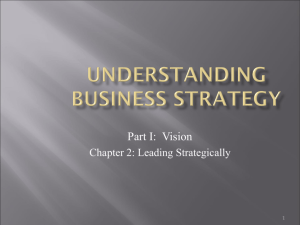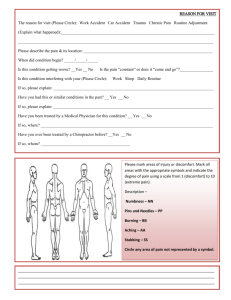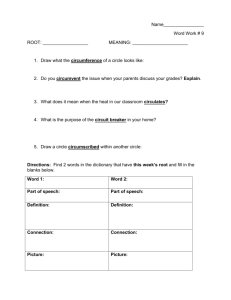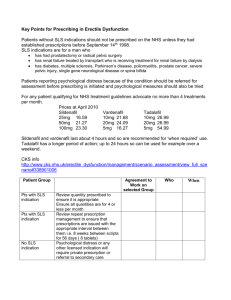SUPPORTED LIVING SERVICE - Allen, Shea & Associates
advertisement
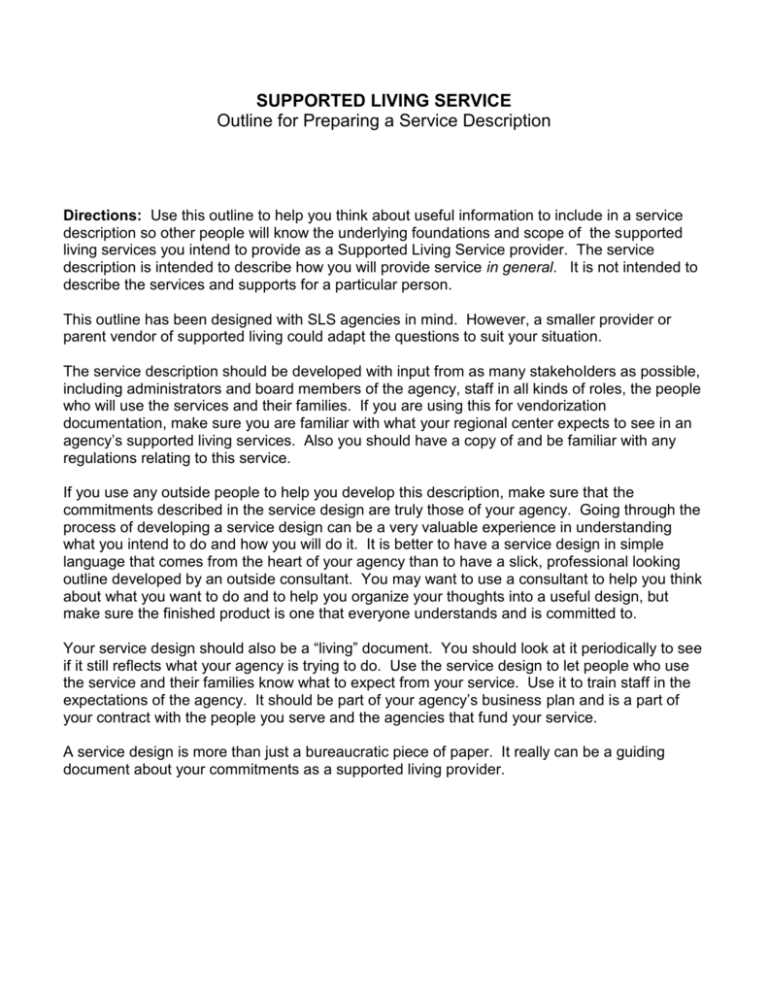
SUPPORTED LIVING SERVICE Outline for Preparing a Service Description Directions: Use this outline to help you think about useful information to include in a service description so other people will know the underlying foundations and scope of the supported living services you intend to provide as a Supported Living Service provider. The service description is intended to describe how you will provide service in general. It is not intended to describe the services and supports for a particular person. This outline has been designed with SLS agencies in mind. However, a smaller provider or parent vendor of supported living could adapt the questions to suit your situation. The service description should be developed with input from as many stakeholders as possible, including administrators and board members of the agency, staff in all kinds of roles, the people who will use the services and their families. If you are using this for vendorization documentation, make sure you are familiar with what your regional center expects to see in an agency’s supported living services. Also you should have a copy of and be familiar with any regulations relating to this service. If you use any outside people to help you develop this description, make sure that the commitments described in the service design are truly those of your agency. Going through the process of developing a service design can be a very valuable experience in understanding what you intend to do and how you will do it. It is better to have a service design in simple language that comes from the heart of your agency than to have a slick, professional looking outline developed by an outside consultant. You may want to use a consultant to help you think about what you want to do and to help you organize your thoughts into a useful design, but make sure the finished product is one that everyone understands and is committed to. Your service design should also be a “living” document. You should look at it periodically to see if it still reflects what your agency is trying to do. Use the service design to let people who use the service and their families know what to expect from your service. Use it to train staff in the expectations of the agency. It should be part of your agency’s business plan and is a part of your contract with the people you serve and the agencies that fund your service. A service design is more than just a bureaucratic piece of paper. It really can be a guiding document about your commitments as a supported living provider. Support Living Service Description: Cover Sheet Date: Name of SLS Agency / Company: Vendor #: Agency Director: Contact Person for Supported Living: Agency Address: Agency Phone: Email Address: Emergency Phone Number: Vendoring Regional Center: Fax: Supported Living Service Design Outline Directions: The following outline contains questions to guide your thinking about how you will provide services. Please feel free to include other information that is relevant to the section or to add more sections. (In the quotation marks, you will find more traditional descriptions of what might be included in the section.) 1. Philosophy and Values and Goals What is your agency’s mission statement? How does your supported living service relate to the mission statement? What values do you believe in? (List and describe each of the values that you believe in and how each value is incorporated into how your agency provides services.) What are the goals and outcomes you hope to accomplish? 2. People Served Describe the people that you want to serve in this service. How will people start services with you? (Describe your “intake” process, including how the decision will be made whether you will provide services to someone.) Under what circumstances might you stop providing services to someone? 3. Planning How will you begin the planning process with someone (“beginning assessment”)? How will you do future’s planning with people, once you have been chosen to provide SLS for the person? How will you make person centered planning an ongoing part of the process of providing SLS to individuals? What kind of written record will you have of all planning with people (summary of the futures plan, individual support plans, circle minutes, etc.)? (“ISP”) How will you assist the person served to be more in control of his/her life, including where they live, with whom they live, how their support is provided, and other major and minor decisions related to their lives? 4. Circles of Support / Relationships How will you help an individual pull together and use a circle of support to assist them to live in their own place? How will you make sure the individual continues to have a circle of support that works for him/her? How will you help to expand the circle? How will you help to facilitate the working of the circle, especially when there are conflicts among people in the circle? How will you assist people to develop and maintain relationships? How will you help them become a part of their community? How will you help individuals who have conflicts with others? (“behavior challenges”) 5. Staff / Employees of Agency Describe the types of roles that people will play within your agency. (“organizational structure of paid supports”) Describe which role will have primary responsibility for coordinating an individual’s supported living services and how they will do that. Describe the general job description and staff qualifications for each role (understanding that job descriptions will vary with each individual situation.) Describe the employee recruitment, screening, hiring process at your agency. What role does the individual receiving services play in this process? What kinds of things will you do to find and keep good people in an individual’s life? How will you make sure employees are doing a good job? (“Supervision plan” “quality assurance”) 6. Training What kinds of training do support people receive at the beginning of working with an individual? (“new staff training”) What kinds of ongoing training are provided to support people? (“inservice training”) What kinds of training or information are provided to people who use the services of your agency at the beginning (and ongoing) about what to expect from SLS? What kinds of training or information are provided to other people in the individual’s life, such as family members, on SLS ? How else do you make sure staff and other circle members have the information and skills they need to assist the individual effectively? 7. Resources How will you assist individuals to access generic resources? Give some examples of typical generic resources you will assist people to access. How will you incorporate these resources, with other resources, into the person’s support plan? How will you assist individuals to develop and maintain natural (unpaid) supports? What will your agency need to do to maintain funding for an individual (regional center, IHSS, etc.)? How will funding affect how you decide which services to deliver? Who will be a part of the process of deciding how funding will be used? 8. Services: Describe what types of services and supports you will have available to the people served by your agency. (NOTE: You should describe the typical options or patterns of support in each area; however, each person’s situation will be different.) Personal assistance (assistance with personal care, hygiene, etc.) Describe how IHSS will be coordinated with other types of assistance in this area. Meal planning and cooking Household maintenance Housing (Describe how you will assist people to locate and maintain a residence, including accessing generic resources for housing, rental deposits, furnishings, etc.) Money management (budgeting, banking, managing credit, etc.) Roommates (determining whether to have roommate, assistance in finding roommates, assistance in relationships with roommates) Attendant management (how you will assist people to employ and supervise attendants) Daily living assistance (making appointments, handling problems that come up, etc.) Acquiring and using adaptive devices, assistive technology, etc. Using transportation Mobility training Medications Using the community 9. Health and Safety How will the circle be involved in making sure the person is as healthy and safe as possible? What other safeguards will be in place? (“quality assurance” “health and safety plan” “monitoring”) How will you designate responsibility for making sure a person’s health needs are addressed? What training will all parties have in health and safety issues? What training will support people have in safeguarding against sexual, financial, emotional and physical abuse and exploitation? What training will the individuals receiving services have in maintaining their own health and safety and in safeguarding themselves from abuse and exploitation? What about training for families? How will you help resolve conflicts between a person’s right and need to control their lives (“making choices”) and concern for their personal safety or health? How will you make sure that the person has the level of assistance (“supervision”) that they need to be safe, especially for people receiving non-stop assistance? 10. Emergency Assistance What types of emergency back up will be available for the individuals served by your agency? What types of equipment will be needed for your system to function? What kinds of training will individuals receive in the emergency assistance procedures? 11. Accountability What types of records will be kept regarding your agency and your services? What types of reports will you provide on the services and outcomes for an individual? (Describe what form each will take, the timelines, who will receive the report, etc.) Describe your process for reporting special incidents and suspected abuse, as required by law. How will your agency determine people’s satisfaction with your services, including the people who use your service, their families, your funding agency (regional center), others? How will your agency evaluate your effectiveness in providing services? How will you use the evaluation to improve services? What is your process for resolving grievances identified by people using services and their families?
